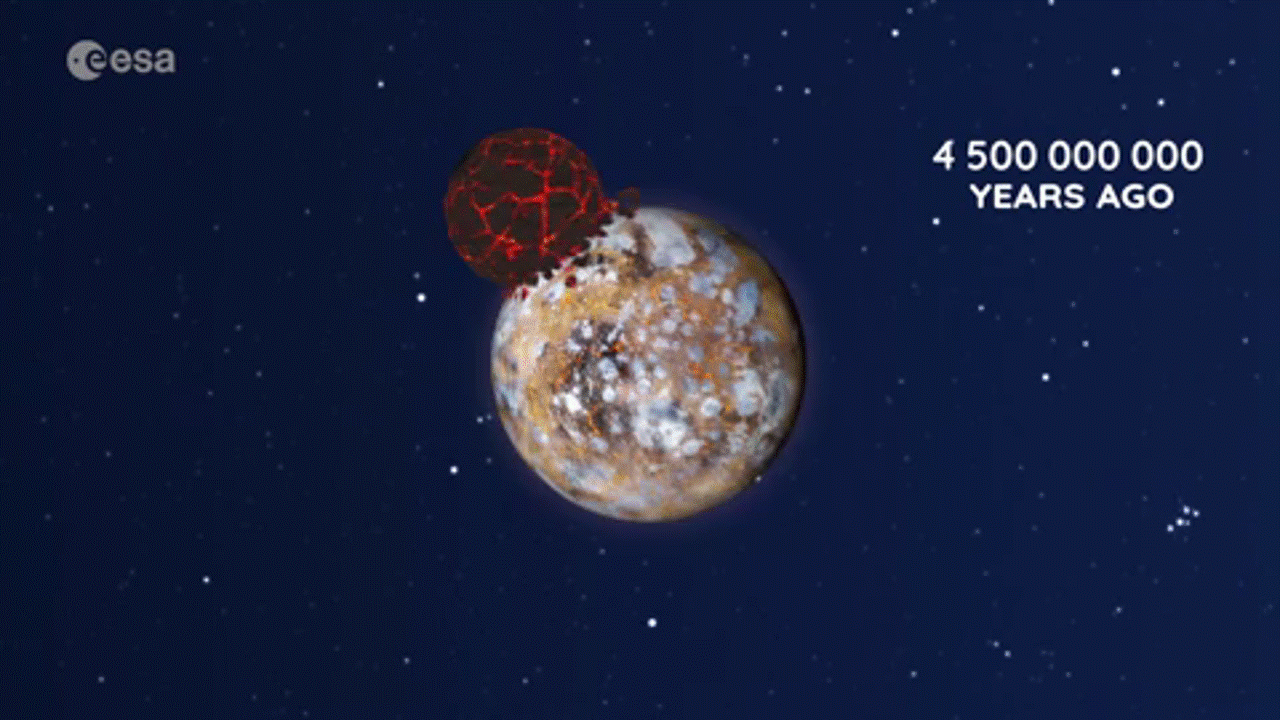Day 1 and 2 - Astronomy

Moon
Now will talk about the moon, and its properties and effects.

The most scientifically supported theory on how the moon formed is that Earth collided with a Mars-sized object billions of years ago. Eventually, the debris from the collision began to build up. Eventually, all the debris was gone, most of it having gone into forming the Moon.
 Kelvinsong / CC BY (https://creativecommons.org/licenses/by/3.0)
Kelvinsong / CC BY (https://creativecommons.org/licenses/by/3.0)
There are two main types of landforms on the moon. There are the maria which are the youngest parts of the moon. At 3.2 - 3.7 billion years old, they are areas where molten lava filled in large basins. This has been taken as evidence that the Moon was once as geologically active as Earth is now. The lunar highlands can be as old as 4.6 billion years old and is full of craters.
 Orion 8 / CC BY-SA (https://creativecommons.org/licenses/by-sa/3.0)
Orion 8 / CC BY-SA (https://creativecommons.org/licenses/by-sa/3.0)
The phases of the moon are phases that the moon appears to go through because of its orbit and how the light of the sun reflects onto Earth. During two of these phases, full moon and new moon, eclipses can occur. The moon’s orbit is slightly offset from that of the Earth around the sun, so these don’t occur often. A solar eclipse can only occur during the new moon. This is when the shadow of the moon is cast onto the Earth. Only those in the Moon’s umbra can see a total solar eclipse. A lunar eclipse can only occur during the full moon. The shadow of the Earth is cast onto the moon. Everyone who is experiencing night during a total lunar eclipse can witness the event, and the moon may appear to be red due to the bending of sunlight through Earth’s atmosphere.


The Moon’s gravity is what causes the tides. As it is much closer than the Sun, its gravity has more effect. It causes a “bulge” on the side of the Earth closer to the Moon. It also pulls the solid Earth closer to itself, creating a bulge on the other side of the Earth. These bulges are high tide. Perpendicular to the bulges, where the water has been pulled away by high tide, is low tide.